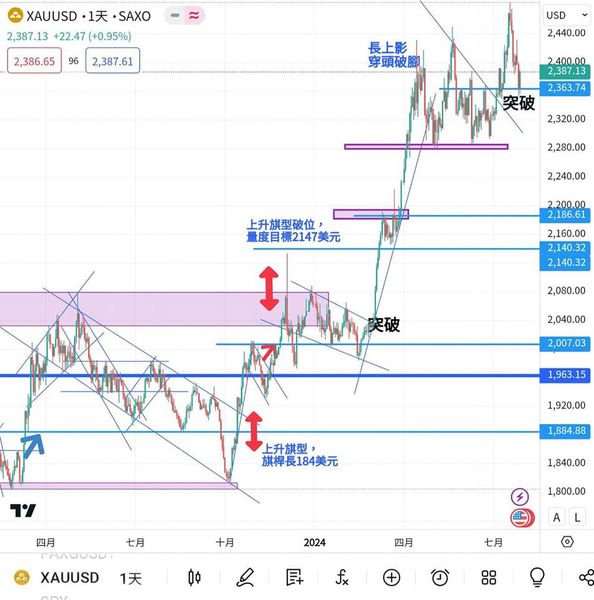Gold fell first and then stabilized to welcome Super Data Week.
Following the performance that the price of gold fell after hitting a new high last week, the price of gold continued to be under pressure last week. At the beginning of the week, it was mainly suppressed by technical selling. The weekly chart broke through and brought technical adjustment pressure to the chart. The market was unwilling to continue to pursue it after hitting a new high, and the lack of acceptance led to the price of gold rebounding and unable to stabilize. It hovered around the psychological barrier of $2,400 many times before the middle of the week, but it also fell through after the middle of the week and fell below the support of 2,380, thus deepening the adjustment pressure.
The market was worried about the economic performance of the United States, and the panic index rose, which caused the Nasdaq and Standard & Poor's to record the biggest one-day declines in the past two years. Asset prices fell, the market opened its positions, and the yen rose, which once affected the precious metal market. The lowest price of gold fell to 2,353.12 in the week, and it didn't rebound until the PCE data was released in the United States on Friday. Although PCE didn't fall further, it didn't deteriorate significantly, and it won't hinder the market's expectation of a rate cut in September, and it may even be expected within
Every time the inflation data is released recently, the gold price shows a positive performance, which shows that the market has basically digested inflation and will not delay the interest rate cut. Looking forward to this week, gold will see initial support at the low level after the retreat, and a number of heavyweight data this week will further lead the direction of gold prices. In addition to ADP, ISM manufacturing PMI near the middle of the week, and the interest rate meeting between Japan and the Bank of England, the Federal Reserve's interest rate meeting on Thursday morning and non-agriculture on Friday are the most important.
Before the interest rate cut in September, a lot of information was bound to be released at the latest interest rate meeting. Last month, the Ministry of Labor revised the non-farm jobs in May and June, which greatly strengthened the market's confidence in reducing interest rates twice. If the labor market weakens again this time, the interest rate cut cycle will probably come faster and more urgent than expected two months earlier. The market situation is a bit different, so let's refer to each other.
Previous Article Next Article


 Whatsapp
Whatsapp Telegram
Telegram
